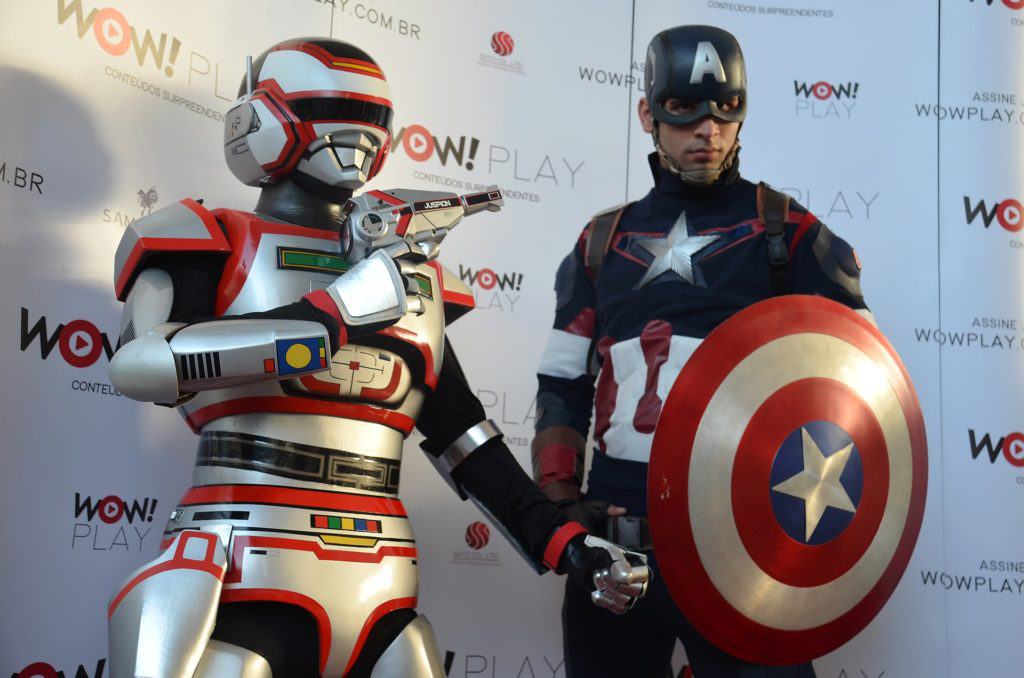
If your latest Cosplay idea is stuck in development… if you can’t find what you need to bring your creation to life… if you’re struggling to add those all important details… if your latest attempt at creating armor just fell flat… this article is for you. Here’s why
3D Printing brings your imagination to reality and allows you to customize every aspect of your Cosplay you need. 3D Printing makes creating fine detail, and large-scale armor possible with just a little bit of imagination.
More importantly, you have to realize there is a cost to ignoring 3D Printing.
Before 3D Printing Were the Dark Ages… (Dramatic Pause)
What most people do when they get stuck in their cosplay creation is settle, change their design, or put in hours of work for minimal results. For most of those people, none of that really works.
- Settling just leads to disappointment. Other people don’t know, but if you are like me it’s the details you didn’t achieve that eat at you.
- Changes in design are necessary, but they add up, and the further you get from your intent, the more frustrated you become.
- Some people stick out those hours of work to craft that one little detail, but did they get done in time to show it off at the latest convention?
And what if you did what so many others do? What if you did nothing? I’ll tell you, that costume will sit, unfinished, and you won’t be able to show it off.
For years people had no way to really overcome some of these obstacles. But, with time the Cosplay industry has grown. The community has become better and better, and solutions are shared.
Welcome, Your Shining Light… The 3D Printer (Queue Music)
3D printing hobbyists who also double-up as Cosplay enthusiast can testify to the versatility, accuracy, and quality the 3D printer has brought to Cosplay. If you really dig in you’ll start to see the impact of 3D Printing on the community. Shared files and amazing prints are everywhere. Ranging anywhere from full armor sets to your favorite sci-fi pistol.
Finally, It’s Your Turn
Let’s imagine you are interested now. Where do you get started?
First, let’s figure out how you plan on using your 3D printer. Before you choose a printer it’s a good idea to know what you want. These are complex machines, and understanding your needs will help you select the best Cosplay 3D Printer for you.
Conceptualizing your Model
Two questions you need to consider are
- What am I making?
- What will I be doing with it?
Are you making a full set of armor, a weapon, or a detail like a pin, button, broach, gear, etc. The list is endless, but knowing what types of things you will be making for your current and future projects is critical.
What you are planning on doing with your cosplay is key too. Essentially think about how active you will be. What kind of durability do you require, and how are you going to be navigating around people.
Essentially, you need to start thinking about whether you need fine detail or large print volume. Don’t worry, we’ll get into that more in a little bit.
Understanding the Scale of Work
Based on the earlier questions we now get to the scale of your project. As a general rule, I tend to think of Cosplay as an art that requires big build volume. You are making pieces that you will be wearing. Remember that most 3D Printers for your home have small print areas. Don’t worry, I’ve got some suggestions for you coming up.
Some people don’t plan on printing large objects. If you are one of those people then you will want to consider a printer that is better at printing fine detail.
Again, the durability comes into play. The filament type you will be selecting will largely be based on this requirement. Build volume as well. The smaller the build volume the more welds you need to perform. Welds are a potential weak point.
The things to consider here include the following:
- Measuring your body size to determine how large props and costumes will be
- Analyse the different materials needed for its creation and the filament types to be used.
- Understand how each prop functions and choose a process—3D scanning or 3D modelling—for developing your digital 3D models.
Finishing Your Prints
Every print will need to be finished in some way prior to becoming a part of your costume. Whether you paint it or just polish it. Understanding the finishing process for 3D Prints might affect your 3D Printer decision. Lucky for you I’ve got a handy 3D Print Finishing Guide.
Criteria for Choosing the Best 3D Printers for Cosplay
OK, now your head is in the right place. You should have at least a general idea of what you want. It’s time to get to what you came here for.
There are a plethora of 3D printing devices out there as well as brands which you can take advantage of for your Cosplay design needs. But before settling on a device, it is important to have a deep understanding of the different features a great 3d printer must have in order to bring out the best in your Cosplay costumes.
To help you make a more educated choice as well as maximize your budget, here are the major criteria to consider:
- Ease of Use— 3D Printing isn’t easy from day one. You will get better at it for sure, but there is a learning curve. Understanding how the software works, and how to get settings just right for you is a… learning process. Are you the type of person that just wants to get printing, or are you the type that will learn more from digging into the nitty gritty right off the bat?
- Build Volume—build volume focuses on the capacity and size of the platform you will be building your props on. And this is where the notes you have taken concerning the scale of work to be done comes into play.
- Filament Types—there are 3D printers that can print with different filament types that give you the characteristics of the diverse materials out there. Therefore, if your costumes need a metallic finish or glowing features to look and feel real, then you must consider the filament types a 3d printer works with.
- Technical Features/Details—the different 3D printers out there also sport diverse features that play a role in how quickly and accurately you can print. These are features you must also consider because they help you eliminate errors and reduce the number of prototypes you make before getting it right.
So here you have it, the most important criteria which this article uses to highlight the top 3D printers you should consider purchasing for your Cosplay costuming needs.
Before delving straight into what I consider the best, here are a few things I would like you to note. Since these 3D printers are for developing props for Cosplay, the focus will be on desktop 3D printers and not larger industrial 3D printers. It is also important to note that you can’t legally sell your Cosplay props without authorization from its parent company.
Ease of Use
Assuming you are looking at this 3D Printer to support your Cosplay hobby, and not to be a hobby in and of itself purchasing a 3D printer that can get you started in less than 5 minutes is the way to go. This means on receiving your package, you can unbox the 3D printer skim through its installation guide, attach a filament spool and start printing within 5 minutes!
Basically, you will not be tasked with assembling the printer from scratch.
The next thing to consider that will simplify the use of your 3D printer is how it functions and how easy it is to keep track of all the parameters—print speed, available filament, temperature etc.—that ensure your 3D printing exercise goes smoothly.
Therefore, purchasing plug and play 3D printers such as the Robo R1+ and the Dremel Digilab 3D20 are great options that ensure you can get started immediately without much prior knowledge about 3D printing. The Dremel Digilab 3D20 also comes with an interactive LCD control screen which provides you with the prompts needed to monitor the 3D printing process in real time.
Build Volume
As alluded to earlier, one of the most important specifications for a 3D Printer for Cosplay is build volume. You are making things you will wear after all.
The bigger your Cosplay props and costumes, the more build space or volume you will need for developing them. Therefore, when choosing a desktop 3D printer for Cosplay, you must consider going for a 3D printer with enough build volume to fit the sizes you previously measured in the conceptualization stage.
When 3D printing weapons—such as swords, hammers or arrows—as props you will probably have to print in multiple pieces then cold weld them together in the print finishing process. The bigger the build volume, the fewer the welds.
This is where the relatively large build volume of the Creality CR – 10s and the LulzBot Taz 6 comes into play. Both 3D printers provide you with a build volume of approximately 280 * 280 * 250mm—although the Creality CR – 10s offers even more volume—which is enough to 3D print large Cosplay objects.
When considering build volume, these two are some of the best options you should consider as a Cosplayer interested in creating props using a 3D printer.
Filament Types
Moving to the third criteria Cosplayers must consider, is the ability of a 3D printer to 3D print with different filament types that make your props look even more realistic than normal, or to withstand different stresses. Today, you can purchase desktop 3D printers that allow you 3D print with standard filament types—PLA, ABS, and other thermoplastics—as well as with more decorative filament types like metal, wood, ceramics etc.
The versatility of a 3D printer which can 3D print multiple filament types brings to the table is unquantifiable. When 3D printing the Cosplay props and costumes of characters from the Sci-Fi genre you will invariably want to print with some of the more exotic materials.
Working with metal, you can easily 3D print components to look like a robot such as R2-D2 without having to integrate as many extra finishing touches to your printed object. You could also work with materials such as PCL and PCT which are very durable for 3D printing costumes and props that will witness some physical use during Cosplay activities. I’m looking at you swords and shields…
And the 3D printers you should consider when you need to work with multiple filament types are the; LulzBot Taz6, Creality CR – 10s and the Robo R1+. These 3D printers come equipped with the ability to 3D print more than 30 filament types thereby giving you all the versatility with materials you will require when 3D printing.
Technical Features
Lastly, there are multiple features which must be considered before purchasing a 3D printer for Cosplay.
These include print speed, resolution quality etc. But here, I will take a look at more specific features that will help you reduce 3D printing errors as well as speed up your projects.
The first feature to be considered is automated print beds. Print beds with added features such as self-leveling print beds as well as adjustable temperature play a huge role in eliminating many of the common 3D printing problems you may face.
Therefore, purchasing the LulzBot Taz6, the Robo R1+, and the Creality CR -10s are great options you should consider.
Singling out each 3D printer mentioned here, I noted:
The Lulzbot Taz 6 is fitted with a self-leveling bed and a self-cleaning nozzle which both ensure that you do not have to manually reset your print bed after every print or clean its nozzle periodically to avoid the problems associated with a blocked nozzle.
The Robo R1 plus also comes with a self-leveling bed and a free subscription to Autodesk’s Fusion 360 app which gives you access to the cloud as well as free 3D models you can 3D print.
Lastly, the Creality CR – 10s print bed is a heated glass bed which adds an aesthetic feel to your projects and allows you eliminate problems such as warping.
The Need for Post-Processing
As 3D printing hobbyists, I discovered that when 3D printing for Cosplay, a lot of post-processing activities goes into making our costumes and props look and feel like the real deal.
You will have to carry out some post-processing duties to make your 3D printed costume look as detailed as you desire. The post-processing techniques you can apply are diverse and they include; smoothing, polishing, painting etc. You can learn about 3D printing finishing techniques and the different tools you need to execute them in detail here.
It’s Decision Time
Well, that was a pretty in-depth article for you, and I slipped four printers in there for you to consider. Rather than scrolling up to look for those handy links, let’s take a look at how things panned out.
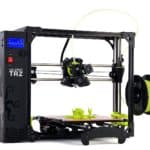 Lulzbot Taz 6
Lulzbot Taz 6
Best performance. Lulzbot is a big name in the 3D Printer community. You’ll pay for that performance, but if you have the cash it’s totally worth it. This machine is easy to use, highly accurate and has a great build volume. You can’t go wrong with this machine.
Read an in-depth review of the Lulzbot Taz 6 or:
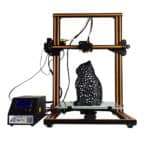 Creality CR-10s
Creality CR-10s
Less expensive than the Taz 6, but still a strong performer. The Creality CR-10s really excels in build volume and price. Despite its big build volume, it prints accurately as well. There is a little assembly required, but not too much. There is a large community around this printer to help you out as well.
Read an in-depth review of the Creality CR-10s or:
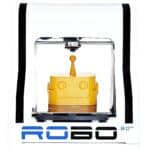 Robo R1+
Robo R1+
This is a solid choice for your Cosplay needs and really stands tall in the ease of use category. It sits at a good price point and performs well in each category. I think of this as the Jack of all 3D Printer.
Read an in-depth review of the Robo R1+ or:
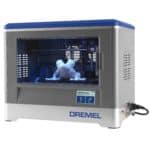 Dremel Digilab 3D20
Dremel Digilab 3D20
Yes, the Dremel Digilab lags behind the other three printers in this list. That does not mean it’s a bad 3D printer. It’s just up against some titans on this list. This is the most user-friendly 3D printer of the group. Education is a primary design motivation behind the 3D20. If you are getting a 3D printer for a school club, or other groups this is probably your best choice.
Read an in-depth review of the Dremel Digilab 3D20 or:
Buy the Dremel Digilab 3D20 Now!
Which 3D printer is for you?

